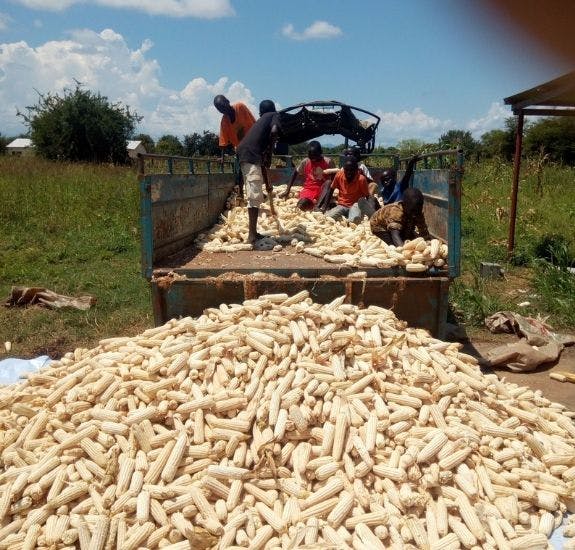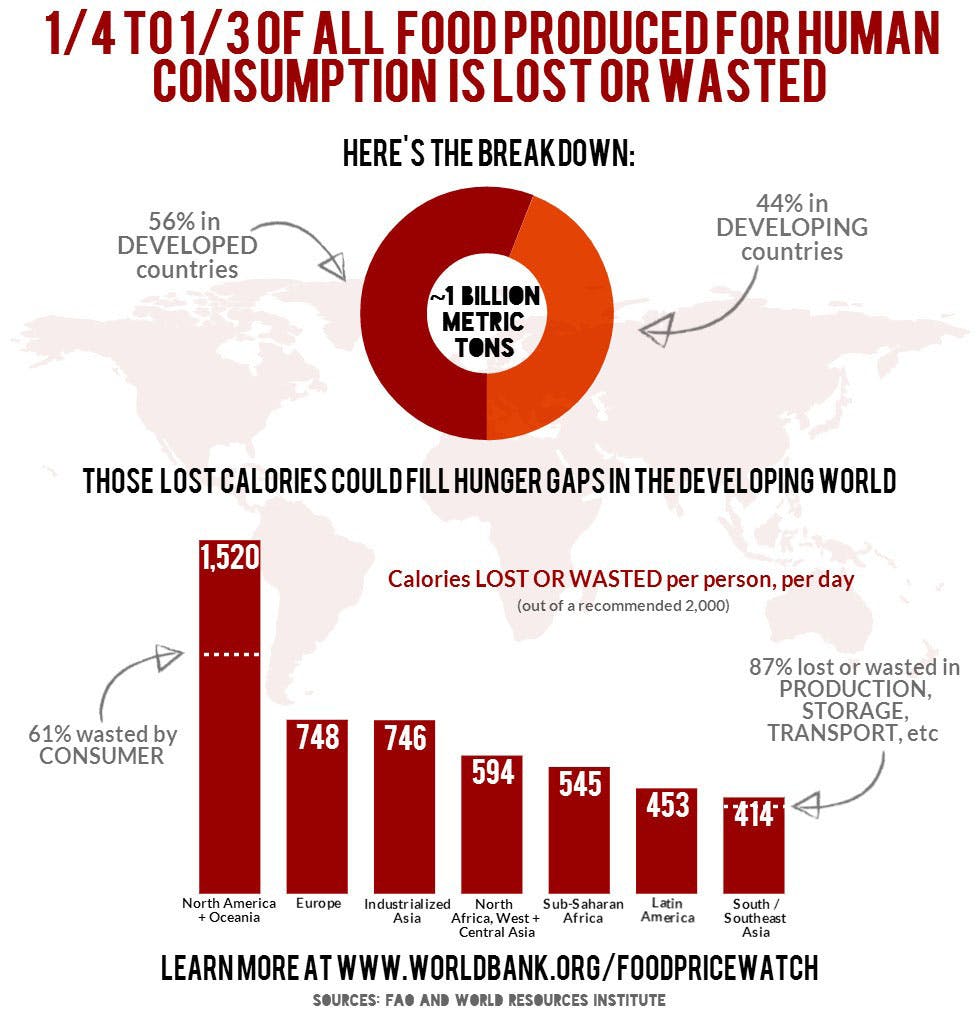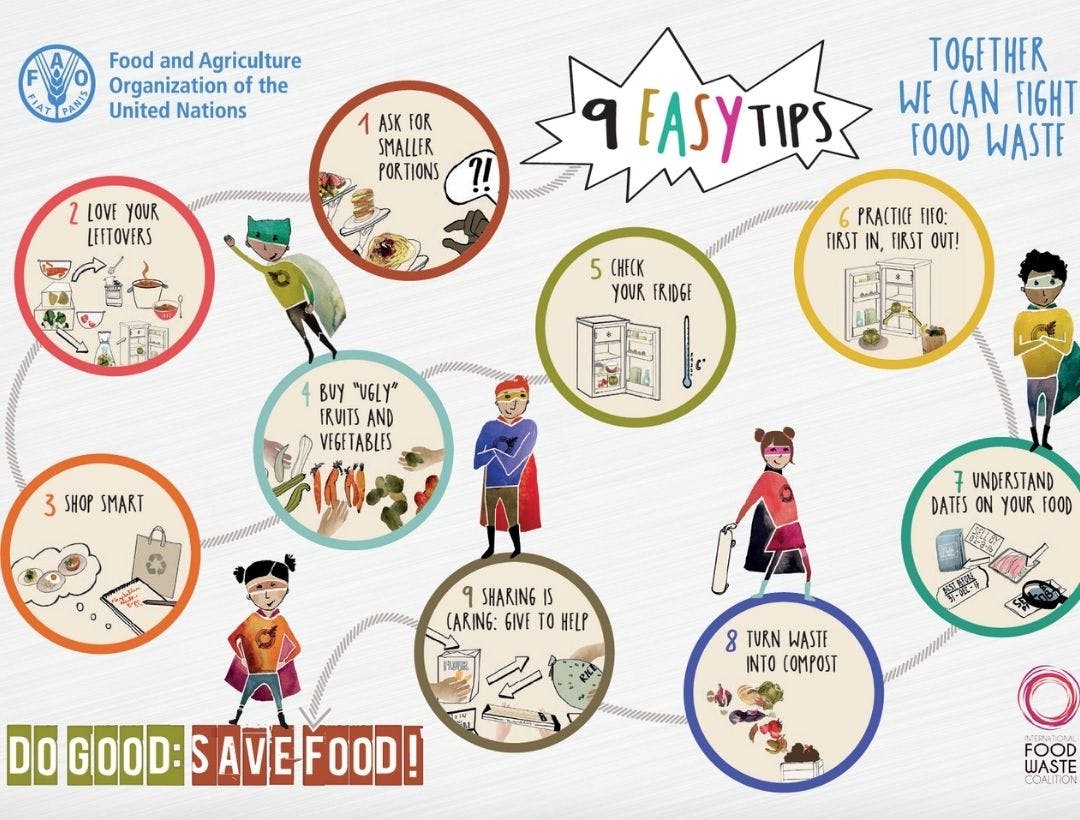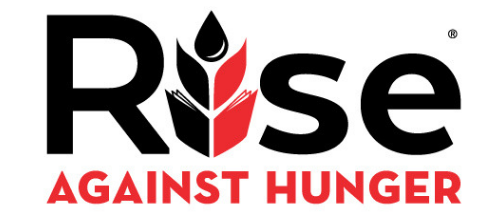Addressing Food Waste Plays a Role in Ending Hunger

Think about what food you’ve thrown away in the last 24 hours. In the last week. In the last month. Try not to cringe. We waste a lot of food, and it is something we all should pay attention to. As Rise Against Hunger is driven by the vision of a world without hunger, it’s important for our organization to be aware of and talk about both food loss and waste. Food loss can occur during production, storage, processing and distribution within the food system. Food waste takes place when, for example, you buy too many containers of mushrooms because they’re on sale, then open the fridge eight days later to a funky smell and realize you shoved those mushrooms in a corner and forgot all about them. Did you know that food loss and waste play a part in the availability, access and utilization required to achieve food security? It’s true!
One-third of the global food production is wasted every year. That’s four times what it would take to relieve undernutrition worldwide. This pervasive issue is even included in the United Nations Sustainable Development Goals, directly tying in to the work we do here at Rise Against Hunger as we also support the Sustainable Development Goals. UN Sustainable Development Goal #12 is Responsible Consumption and Production, and of its objectives is to halve per capita food waste globally. This would also have an impact in Rise Against Hunger’s work to end hunger. If countries, including the United States, support and work toward the reduction of their food loss and waste, we could see huge improvements in global hunger! Our population is projected to reach 8.1 billion in 2025 with 95% of that growth in low and middle income countries. While we are producing enough food to feed everyone, the poor practices in the food system are cause for massive food waste and thus contribute to global food insecurity.

While 820 million people face hunger globally, $750 billion is lost as a result of wasted food every year. Countries of low and middle income status are overall at much higher risk for food loss from a lack of post-harvest preservation techniques, including in areas where we work. For example, in South Sudan, all of the mangoes are harvested in two months. Without a way to preserve them through the year, half of the harvest is lost. Poor infrastructure, sensitivity to climate shocks, inadequate transport systems, technology and storage and drought-induced pest infestations are also main drivers for the loss of food.
But guess what? You – and other Hunger Champions – can help address the issue of food waste. In the US, 21% of all food is lost at the consumer level. That means the food in our fridge made it through a journey of harvesting, processing, transport and selection only to rot in our kitchen. Don’t be discouraged: while that number is significant, it also means we as consumers have power to make a difference! We can adopt better habits around food planning, shopping and preparation (illustrated in the image below from the Food and Agriculture Organization).

We can also request and advocate for changes in the food industry, such as more clearly defined expiration date labels and policies that require food retailers to donate their extra food. We can educate other consumers on food waste consequences and tips for reducing waste. And, last but certainly not least, we can also push for legislation and infrastructure changes locally, nationally and internationally that address the parts of the food system where the highest amount of food is currently being lost or wasted.
If we all do our part, we can make progress towards reducing global food waste and reducing global hunger at the same time!
Sources:
https://eatdrinkbetter.com/2016/02/10/food-recovery-act/
FAO and World Resources Institute
World Bank
Birney, C.I., Franklin, K.F., Davidson, F.T., Webber, M.E. An assessment of individual foodprints attributed to diets and food waste in the United States. Environmental Research Letters. Vol 12:10. October 17, 2017. Retrieved from http://iopscience.iop.org/article/10.1088/1748-9326/aa8494
Dangour, A.D., Mace, G., Shankar, B. Food systems, nutrition, health and the environment. The Lancet Planetary Health. Vol 1:1. April 2017.
Economist Intelligence Unit. Fixing Food 2016: Towards a more sustainable food system. 2016. Retrieved from http://foodsustainability.eiu.com/whitepaper/
Taillie, L.S., Jaacks, L.M., Toward a Just, Nutritious, and Sustainable Food System: The False Dichotomy of Localism versus Supercentrism. The Journal of Nutrition. Vol 145:7. July 2015. Retrieved from https://academic.oup.com/jn/article/145/7/1380/4644404

